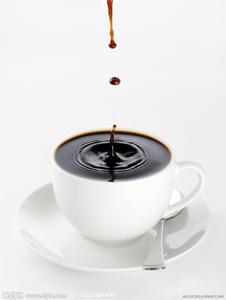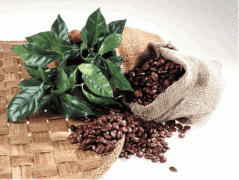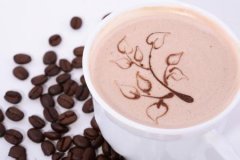The proud coffee culture of the Viennese

Coffee is something that Viennese enjoy talking about and are quite proud of. The Viennese even compare it with music and waltz, which is called the "three treasures of Vienna", which shows the relationship between Viennese and coffee. Some people say that Vienna is "five steps and one coffee", which may be an exaggeration by the poet, but it is true that there are a large number of Vienna cafes. From the coffee kiosks around the corner for people to drink standing up, to the coffee shops gathered by students near the university, to the magnificent coffee shops next to the theatre and by the Imperial City, there are at least dozens, some of which open at 06:30 in the morning and do not close until 2 a.m. Therefore, it is not too much to say that the air of the "capital of music" is not only flowing with the rhythm of music, but also filled with the fragrance of coffee.
The history of Viennese drinking coffee can be traced back to the 17th century. At that time, there were many cafes in large and small cities in many Islamic countries, and coffee had become an indispensable part of people's lives. But in Europe, people still don't know what it is. In 1683, Turkey attacked Vienna for the second time, when the Austrian Emperor Augustus II signed a military alliance with King Augustus II of Poland. The fleeing Turkish army discarded large quantities of weapons, ammunition and hundreds of large pockets of mysterious brown beans on the battlefield around the walls of Vienna, and the victorious Viennese did not know what to do with them. As it happens, a Polish spy lurking in the Turkish army, Kohzki, once tasted a thick black drink made from this roasted bean in Constantinople. The Turks called it "Kahve", which is now coffee. As a reward, the Polish received all the coffee seized on the battlefield and opened the first coffee shop in the history of Vienna. Today, there are still many cafes that claim to be the first coffee shop opened by Poles to attract customers. But in the beginning, coffee shop business is not good, Viennese still prefer to drink tea. Later, the businessman changed the recipe and added milk to his coffee, which worked surprisingly well and became popular in the 1780s. People call it "Melange". To this day, although coffee is varied, it is still the most popular drink in Vienna.
Important Notice :
前街咖啡 FrontStreet Coffee has moved to new addredd:
FrontStreet Coffee Address: 315,Donghua East Road,GuangZhou
Tel:020 38364473
- Prev

Basic knowledge of Fine Coffee an overview of the history of Yemeni coffee
Coffee scientific name: Coffea arabica), also known as coffee tree, Arabica coffee, etc., is the national flower of Yemen. Before the 6th century in the park, Yemen was called Arab, so the coffee trees transported from them to other places were also called Arabian coffee trees. The name coffee comes from the Arabic Qahwah, which means plant drink. Later, the coffee spread all over the world, and it was picked.
- Next

On the details of American Democracy from the Perspective of drinking Coffee
The term consumer rights has now taken root in the hearts of the people, especially in contemporary China, where fake and shoddy products are prevalent. By contrast, the word consumer responsibility seems strange. Consumer responsibility? Isn't it the responsibility of consumers to pay? Most people might say that. In the United States, there is a group of people who do not see it that way. In their view, consumers' consumption behavior is not only a kind of
Related
- Beginners will see the "Coffee pull flower" guide!
- What is the difference between ice blog purified milk and ordinary milk coffee?
- Why is the Philippines the largest producer of crops in Liberia?
- For coffee extraction, should the fine powder be retained?
- How does extracted espresso fill pressed powder? How much strength does it take to press the powder?
- How to make jasmine cold extract coffee? Is the jasmine + latte good?
- Will this little toy really make the coffee taste better? How does Lily Drip affect coffee extraction?
- Will the action of slapping the filter cup also affect coffee extraction?
- What's the difference between powder-to-water ratio and powder-to-liquid ratio?
- What is the Ethiopian local species? What does it have to do with Heirloom native species?

